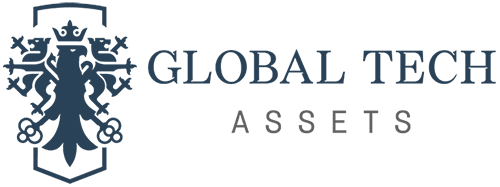In today’s fast-paced and competitive business landscape, operational efficiency is the holy grail that companies strive to achieve. M&A operations efficiency is something of a miraculous potion that transforms struggling corporations into flourishing ones.
It’s a simple equation: improve process = improve performance.
At its core, when you improve operational efficiency, you prove that you’re able to do more with less. In essence, you’re able to automate processes and resource utilisation so that you can maximise output while minimising inputs. Below, we’ll explore the key tenets of operational efficiency, with a focus on two critical concepts:
- Improving business operational efficiency to enhance profits;
- Documenting key processes and workflows.
Streamlining Business Operations to Maximise Profitability
Streamlining business operations is a long-term focused fundamental principle of operational efficiency. It involves optimising the way a company functions.
Goals can vary, but better business ops usually:
- reduce waste;
- enhance productivity;
- streamlines processes in an adequate amount of time, and;
- ultimately, boost profits.
Here are some key strategies and considerations for achieving this goal:
1. Identify and Eliminate Waste
In terms of M&A operations efficiency, wasteful activities need addressing. Waste comes in many forms, from excessive inventory to inefficient processes. Lean thinking, a popular methodology in this context, encourages businesses to identify and eliminate waste in all its forms.
By reducing unnecessary steps and resources, companies can improve their bottom line.
2. Automate Repetitive Tasks
Automation is a powerful tool for streamlining operations. By automating repetitive and time-consuming tasks, companies can free up valuable human resources and reduce the risk of errors. This not only improves efficiency but also allows employees to focus on more strategic and value-added activities.
3. Implement Agile Practices
Agile methodologies, originally developed for software development, have found widespread application in various industries. Agile emphasises three critical concepts:
- Adaptable;
- Collaborative;
- Continuous improvement.
By adopting agile practices, companies can respond quickly to changing market conditions and enhance customer satisfaction, thus enhancing operational efficiency.
4. Optimize Supply Chain Management
An efficient supply chain is critical for many businesses. Optimizing supply chain operations can reduce lead times, lower inventory costs, and improve responsiveness to customer needs. Advanced technologies like blockchain and data analytics play a vital role in achieving these optimisations.
5. Embrace Digital Transformation
Digital transformation involves leveraging technology to reshape business processes and customer experiences. Several critical technologies can drive M&A operational efficiency. Some common examples include cloud computing, big data analytics, and the Internet of Things (IoT).
By harnessing these tools, companies can gain real-time insights, streamline decision-making processes, and enhance customer interactions.
Documenting Key Processes and Workflows for M&A Operations Efficiency
The proper documentation of key processes and workflows is another crucial aspect of operational efficiency. Without a clear understanding of how to do things, it’s challenging to identify areas for improvement or train new employees effectively.
By contrast, streamlining business processes and in-house workflows allows you to take stock of your processes step by step. As a result, you’ll be in a position to get ahead of potential cogs blocking your inputs and outputs.
Here are five critical reasons why solid documentation workflows are so essential.
1. Standardise
Documented processes create a standard operating procedure (SOP) that all employees can follow. Such consistency can save time, reduce errors, ensure quality, and simplify training for new team members.
2. Knowledge Transfer
As employees retire or move on, you need to preserve their knowledge and expertise. By doing so, you can pass it along to the next generation of workers.
Documentation helps capture this valuable knowledge and ensures that it doesn’t disappear when employees leave the organisation.
3. Continuous Improvement
Documented workflows provide a foundation for ongoing process improvement efforts. By analyzing documented processes, companies can identify bottlenecks and areas they can better optimise.
4. Compliance and Risk Management
In regulated industries, documentation is essential for compliance with legal and industry standards.
It also plays a crucial role in risk management by ensuring that you follow processes correctly and address deviations promptly.
5. Facilitate Innovation
In addition to standardising, proper documentation can also foster innovation. When employees have a clear understanding of existing processes, they can more easily identify opportunities for improvement or propose innovative solutions.
Best Practices for Documenting Processes and Workflows
Without an understanding of best practices, you won’t be in a great position to operate your business efficiently. To effectively document key processes and workflows, we recommend organisations consider the following best practices.
1. Use Visual Tools
Visual representations like flowcharts, diagrams, and process maps can make complex processes easier to understand and follow.
2. Keep Documentation Updated
Processes change over time, so it’s essential to keep documentation up to date. Regularly review and revise procedures to ensure accuracy.
3. Involve Stakeholders
Engage employees who have direct involvement in the processes you need to document. Their insights and expertise are invaluable for creating accurate and practical documentation.
4. Provide Training
Ensure that employees understand how to use the documentation and where to find it. Training is essential to make documentation a useful resource.
5. Centralize Documentation
Above all, you need to store your documentation in a central location. Accordingly, this makes it easily accessible to everyone who needs it. Modern document management systems can simplify this process.
Some best practices to Centralise Documentation
- Choose a Robust Document Management System: Invest in a reliable document management system (DMS) that suits your organisational needs. The DMS should support version control, access controls, search capabilities, and integration with other tools and systems.
- Establish Clear Hierarchies and Folders: Organise documents in a structured hierarchy with clear folder structures. When you organise documentation, that makes it intuitive for users to navigate and find the information they need.
- Implement Access Controls: Define access permissions and roles to ensure that only authorized personnel can view, edit, or delete specific documents. This safeguards sensitive information and maintains data integrity.
In conclusion, M&A operations efficiency is a cornerstone of success in today’s business world. By streamlining operations to maximize profitability and documenting key processes and workflows, companies can position themselves to compete and grow sustainably.
Embracing these concepts and regularly seeking ways to improve operations is not just a goal. Rather, it’s a fundamental necessity in the dynamic and ever-evolving business landscape. Those who master these tenets will find themselves not only surviving but thriving in the face of challenges and opportunities alike.

